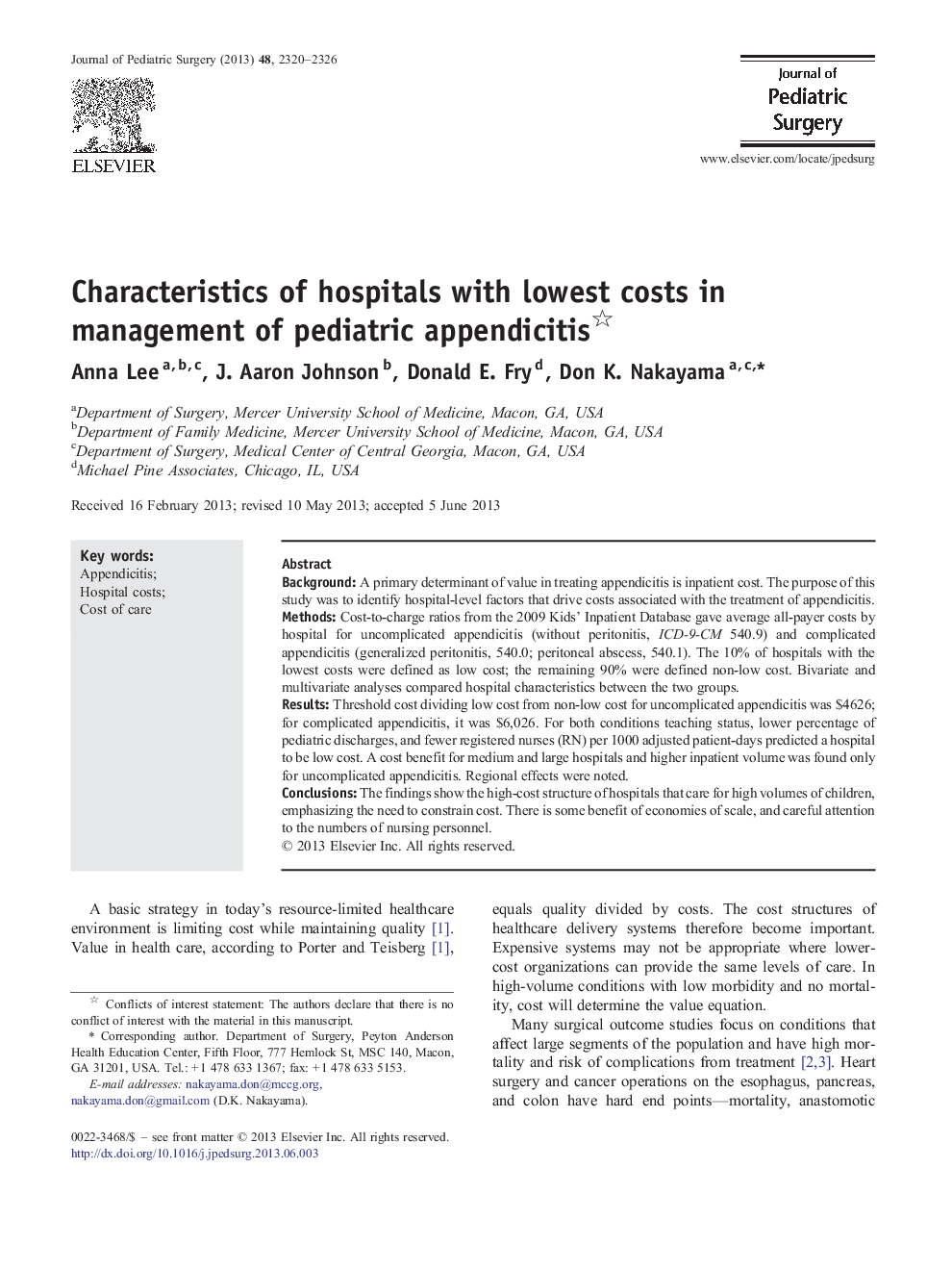| Article ID | Journal | Published Year | Pages | File Type |
|---|---|---|---|---|
| 6217464 | Journal of Pediatric Surgery | 2013 | 7 Pages |
BackgroundA primary determinant of value in treating appendicitis is inpatient cost. The purpose of this study was to identify hospital-level factors that drive costs associated with the treatment of appendicitis.MethodsCost-to-charge ratios from the 2009 Kids' Inpatient Database gave average all-payer costs by hospital for uncomplicated appendicitis (without peritonitis, ICD-9-CM 540.9) and complicated appendicitis (generalized peritonitis, 540.0; peritoneal abscess, 540.1). The 10% of hospitals with the lowest costs were defined as low cost; the remaining 90% were defined non-low cost. Bivariate and multivariate analyses compared hospital characteristics between the two groups.ResultsThreshold cost dividing low cost from non-low cost for uncomplicated appendicitis was $4626; for complicated appendicitis, it was $6,026. For both conditions teaching status, lower percentage of pediatric discharges, and fewer registered nurses (RN) per 1000 adjusted patient-days predicted a hospital to be low cost. A cost benefit for medium and large hospitals and higher inpatient volume was found only for uncomplicated appendicitis. Regional effects were noted.ConclusionsThe findings show the high-cost structure of hospitals that care for high volumes of children, emphasizing the need to constrain cost. There is some benefit of economies of scale, and careful attention to the numbers of nursing personnel.
